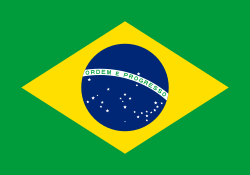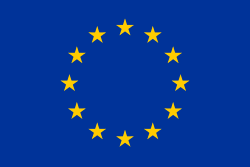Italiens Grand Prix 2001
| Datum | 16 september 2001 |
|---|---|
| Bana | Autodromo Nazionale Monza |
| Sträcka | 53 × 5,793 = 307,029 km |
| Vinnare | Juan Pablo Montoya, Williams-BMW |
| Pole position | Juan Pablo Montoya, Williams-BMW |
| Snabbaste varv | Ralf Schumacher, Williams-BMW, 1:25,073 |
Italiens Grand Prix 2001 var det femtonde av 17 lopp ingående i formel 1-VM 2001.
Resultat
- Juan Pablo Montoya, Williams-BMW, 10 poäng
- Rubens Barrichello, Ferrari, 6
- Ralf Schumacher, Williams-BMW, 4
- Michael Schumacher, Ferrari, 3
- Pedro de la Rosa, Jaguar-Cosworth, 2
- Jacques Villeneuve, BAR-Honda, 1
- Kimi Räikkönen, Sauber-Petronas
- Jean Alesi, Jordan-Honda
- Olivier Panis, BAR-Honda
- Giancarlo Fisichella, Benetton-Renault
- Nick Heidfeld, Sauber-Petronas
- Tomáš Enge, Prost-Acer
- Fernando Alonso, Minardi-European
Förare som bröt loppet
- Enrique Bernoldi, Arrows-Asiatech (varv 46, vevaxel)
- Alex Yoong, Minardi-European (44, snurrade av)
- Heinz-Harald Frentzen, Prost-Acer (28, växellåda)
- Jos Verstappen, Arrows-Asiatech (25, bränsletryck)
- Mika Häkkinen, McLaren-Mercedes (19, växellåda)
- Eddie Irvine, Jaguar-Cosworth (14, motor)
- David Coulthard, McLaren-Mercedes (6, motor)
- Jenson Button, Benetton-Renault (4, motor)
- Jarno Trulli, Jordan-Honda (0, kollision)
Noteringar
- Tomáš Enge och Alex Yoong gjorde F1-debut.
- Juan Pablo Montoyas första F1-vinst.
- Ferraris bilar var målade i rött med svart nos på grund av 11 september-attackerna.
VM-ställning
Förarmästerskapet
| Konstruktörsmästerskapet
|
Källor
- ”2001 Formula 1 Italian Grand Prix” (på engelska). Formula1.com. https://www.formula1.com/en/results.html/2001/races/717/italy/race-result.html. Läst 2 maj 2015.
| ||||||||
| |||||
Media som används på denna webbplats
The Flag of Europe is the flag and emblem of the European Union (EU) and Council of Europe (CoE). It consists of a circle of 12 golden (yellow) stars on a blue background. It was created in 1955 by the CoE and adopted by the EU, then the European Communities, in the 1980s.
The CoE and EU are distinct in membership and nature. The CoE is a 47-member international organisation dealing with human rights and rule of law, while the EU is a quasi-federal union of 27 states focused on economic integration and political cooperation. Today, the flag is mostly associated with the latter.
It was the intention of the CoE that the flag should come to represent Europe as a whole, and since its adoption the membership of the CoE covers nearly the entire continent. This is why the EU adopted the same flag. The flag has been used to represent Europe in sporting events and as a pro-democracy banner outside the Union.The civil ensign and flag of Belgium. It is identical to Image:Flag of Belgium.svg except that it has a 2:3 ratio, instead of 13:15.
















